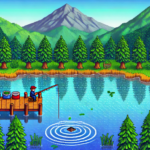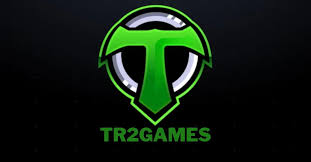As I peruse the latest offerings in high-tech virtual reality gaming, my mind wanders back to simpler times. Those were the days when a handful of pixels and rudimentary sounds were all it took to ignite the imagination. Back then, games didn’t rely on ultra-realistic graphics to captivate players; instead, they offered an escape into fantastical realms through the magic of text. For those of us who came of age in the late 90s and early 2000s, TR2 games were a cherished part of our gaming experience.
Also known as MUDs (Multi-User Dungeons), these text-based roleplaying games transported players to vibrant worlds, all without the need for high-performance computers. Though they may seem basic compared to today’s standards, TR2 games are an integral part of gaming history, fostering communities and forging lasting friendships. In this article, we embark on a nostalgic journey to rediscover these influential games.
Table of Contents
A Brief History of TR2 Games
TR2 Games emerged in the late 1990s, initially focusing on real-time strategy (RTS) games. Their debut title, Total Reconnaissance 2 (TR2), hit shelves in 1999, surprising everyone with its instant success, selling over 3 million copies worldwide. This triumph firmly established TR2 Games as a frontrunner in the RTS genre.
Over the ensuing decade, TR2 Games launched four sequels in the TR2 series, each iteration surpassing its predecessor with upgraded graphics, more sophisticated AI, and fresh multiplayer features. TR2 3 and TR2 4 are hailed as some of the finest RTS games ever crafted. Concurrently, TR2 Games expanded their repertoire, introducing popular RTS franchises like Galaxy Conquest and Desert Storm.
By 2010, the RTS genre’s allure began to wane. Seizing opportunity, TR2 Games ventured into first-person shooters (FPS), introducing the TR2: Special Forces series. This strategic shift paid dividends, propelling TR2 Games to success in a new gaming landscape. Today, TR2 Games continues to cater to their devoted fanbase with a diverse portfolio encompassing both RTS and FPS titles.
Throughout their two-decade journey, TR2 Games has captivated millions of players and pushed the boundaries of RTS and FPS genres alike. The iconic TR2 series stands as a pivotal milestone in RTS history, setting standards and influencing countless titles that followed. For enthusiasts of both RTS and FPS games, TR2 Games embodies an era of innovation, influence, and unforgettable experiences that have left an indelible mark on interactive entertainment. As they venture into new genres, the future holds promise as TR2 Games strives to create more groundbreaking experiences.
Popular TR2 Game Franchises
In 1996, the Tomb Raider franchise embarked on its journey with the release of the inaugural Tomb Raider game, unveiling to the world the iconic protagonist, Lara Croft—a British female archeologist-adventurer. Embarking on perilous expeditions, players traversed treacherous tombs and uncharted landscapes across the globe in pursuit of ancient artifacts and elusive treasures.
Tomb Raider (1996)
Launched to acclaim for its groundbreaking gameplay mechanics and cinematic presentation, the original Tomb Raider game garnered widespread praise. Players assumed the role of Lara Croft as they navigated her through perilous tombs rife with traps and dense jungles, all in pursuit of the coveted Scion artifact. Its triumph sparked a slew of sequels and spin-offs that proliferated throughout the subsequent decade.
Tomb Raider: Legend (2006)
Following a four-year gap, Eidos Interactive breathed new life into the franchise with the release of Tomb Raider: Legend. This sequel reimagined Lara’s origin story while delivering enhanced graphics, physics, and combat mechanics. Praised by both critics and fans alike, Legend proved to be a commercial triumph, revitalizing confidence in the beloved series.
Tomb Raider (2013)
In 2013, Crystal Dynamics embarked on a reimagining of Lara Croft’s origins with the Tomb Raider reboot. Stranded on a perilous island, a youthful Lara is thrust into a struggle for survival while unraveling the island’s dark mysteries. Embracing a grittier and more lifelike approach, this reboot garnered numerous Game of the Year accolades and reaffirmed Tomb Raider’s standing as a premier action-adventure franchise.
Enduring for over two decades, the Tomb Raider series owes its longevity to its iconic characters, immersive settings, and seamless integration of action, exploration, and puzzle-solving. For devoted fans, these games serve as a nostalgic journey to the classic adventures of the ’90s and ’00s. Meanwhile, newcomers have the opportunity to uncover firsthand why Lara Croft remains an indelible figure in gaming history.
Notable TR2 Games Through the Years
Released between 1997 and 2000, some of the most renowned Tomb Raider 2 (TR2) games expanded upon the triumph of the original title. These installments introduced innovative features that enhanced both graphics and gameplay, further solidifying the franchise’s standing in the gaming world.
Tomb Raider 2 (1997)
Arriving on the heels of the inaugural Tomb Raider, TR2 thrust Lara Croft into a thrilling pursuit of the Dagger of Xian across iconic locales such as Venice and the Great Wall of China.
This sequel not only broadened the arsenal of weapons available to players but also introduced exhilarating vehicle segments for Lara to navigate. TR2 garnered acclaim for its meticulously crafted level design, further solidifying Lara Croft’s status as a cultural phenomenon.
Tomb Raider III: Adventures of Lara Croft (1998)
In TR3, Lara embarked on thrilling escapades across India, the South Pacific, and Antarctica. This installment introduced innovative gameplay elements such as rope swinging, stealth mechanics, and diverse vehicle options.
Critics lauded the game’s varied settings and engaging storyline. Despite its commercial success, TR3 faced criticism from some quarters for its expansive level count, which some felt compromised overall quality.
Tomb Raider: The Last Revelation (1999)
Immersed in the mystique of Egypt, TR4 delved into Lara’s formative years and her bond with mentor Von Croy. Introducing novel gameplay mechanics like the capability to lock onto and maneuver around adversaries, this installment garnered generally favorable reviews.
However, certain critiques surfaced regarding elements of the control scheme and camera mechanics. Ending with a tantalizing cliffhanger, the game left players on edge as Lara found herself ensnared within the confines of a tomb.
Tomb Raider Chronicles (2000)
TRC offered a retrospective glance at Lara’s escapades preceding TR4, with gameplay spanning locales like Rome, a German U-Boat, and a Russian submarine. While some reviewers lauded the diverse settings, others critiqued the levels for their perceived lack of quality. Initially intended to serve as the conclusion to the original series, TRC marked the end of an era until the franchise underwent a reboot in 2006.
The early Tomb Raider games broke new ground in gaming, introducing pioneering features that left an indelible mark on the action-adventure genre. While they may appear dated by today’s standards, these titles remain revered classics that played a pivotal role in popularizing Lara Croft, one of gaming’s most iconic figures.
The Legacy and Influence of TR2
The Tomb Raider 2 (TR2) games have had a lasting impact and influence on gaming that continues today.
Pushing the Boundaries of Graphics
Upon its 1997 release, TR2 revolutionized gaming with its cutting-edge 3D graphics, which were hailed as both groundbreaking and visually stunning. The game’s expansive environments transported players into the heart of ancient ruins and untamed jungles, creating an immersive experience unparalleled at the time.
Lara Croft’s character was brought to vivid life through fluid animations and lifelike movements. This pioneering graphical achievement set a benchmark for action-adventure games, serving as a catalyst for numerous titles that followed in the ensuing years.
Defining and Popularizing a Genre
TR2 not only laid the foundation for the action-adventure genre but also propelled it to widespread popularity by seamlessly integrating elements of combat, exploration, and puzzle-solving. Since then, this genre has emerged as one of the most cherished and successful in gaming history.
Inspired by TR2’s innovative formula, acclaimed franchises such as Uncharted, Prince of Persia, and Assassin’s Creed have risen to prominence, offering players a similar fusion of gameplay that tests both intellect and reflexes.
Creating an Iconic Protagonist
Lara Croft has ascended to the status of gaming icon, emerging as one of the most instantly recognizable characters in the industry. Her introduction in TR2 epitomized her distinctive blend of style, athleticism, intellect, and independence.
With her debut, Lara shattered conventions surrounding female protagonists in gaming, demonstrating unequivocally that a woman could helm a prosperous action-adventure franchise. Her influence has rippled across the gaming landscape, inspiring a myriad of other protagonists, while her enduring presence serves as a beacon of empowerment for players worldwide.
Sparking a Multimedia Franchise
The overwhelming popularity and triumph of TR2 catalyzed the expansion of Tomb Raider into a multifaceted franchise, spanning movies, comic books, theme park attractions, and beyond. Resonating with audiences on a global scale, the franchise showcased the potential for games to transcend traditional boundaries and captivate audiences across various mediums. While the cross-media proliferation of gaming IPs has become commonplace in contemporary times, TR2 and Lara Croft blazed a trail as pioneering figures in this realm.
TR2’s groundbreaking and influential legacy will forever hold a significant place in gaming history. Its timeless gameplay and iconic protagonist continue to enchant fans even two decades later, underscoring the enduring impact of the game’s legacy.
What Happened to TR2 Games?
TR2 Games emerged as a prominent developer and publisher during the late 1990s and early 2000s, chiefly recognized for their acclaimed Tomb Raider series starring the intrepid Lara Croft. Enjoying a zenith of success, TR2 Games launched numerous hit Tomb Raider titles for PlayStation and PC, solidifying Lara Croft’s status as a cultural icon and a trailblazer for women in gaming.
However, the company encountered challenges in the mid-2000s. Intensifying competition within the action-adventure genre coupled with tepid reviews and sales of several TR2 releases posed significant hurdles. Additionally, the company struggled with the transition to new gaming consoles such as the Xbox 360 and PlayStation 3, and was slow to embrace emerging business models like downloadable content (DLC) and free-to-play games.
In 2007, TR2 Games underwent acquisition by a larger publisher and was amalgamated into one of its internal studios. Eventually, the Tomb Raider intellectual property (IP) was sold to another studio, while a majority of TR2 Games’ staff faced layoffs. Subsequently, the TR2 brand and its office ceased operations permanently.
The downfall of TR2 Games serves as a poignant reminder for video game companies. To endure, developers and publishers must adeptly navigate technological advancements, design trends, monetization strategies, and evolving audience preferences. They must embrace innovation while maintaining profitability to outpace rivals. Regrettably, TR2 Games faltered in adapting swiftly enough, resulting in the demise of the very entity that birthed Lara Croft.
The video game industry is characterized by its volatility, yet offers substantial rewards. With foresight, ingenuity, and adaptability, companies can cultivate cherished brands and craft genre-defining experiences. However, they must remain vigilant, lest they suffer the fate of TR2 Games—a pioneer overshadowed by the very forces it helped unleash. The narrative of TR2 Games underscores the progress of the gaming landscape and the casualties it leaves in its wake, while Lara Croft endures as a beacon of its boundless potential.
Conclusion
As evident, TR2 games held significant importance in the upbringing of many individuals during the 80s and 90s. Their straightforward yet challenging gameplay, coupled with memorable 8-bit music and graphics, transported players to imaginative realms of adventure. Despite the vast technological advancements since then, the nostalgia for these retro games remains strong. Fond memories persist of gathering around the TV or computer with loved ones, collaboratively tackling puzzles and overcoming adversaries.
Though considered basic by contemporary standards, TR2 games ignited creativity and fostered camaraderie, leaving a lasting impression on those fortunate enough to experience their golden era. While now relics of the past, their influence continues to resonate, shaping childhoods and nurturing enduring connections forged through the shared delight of gaming.










